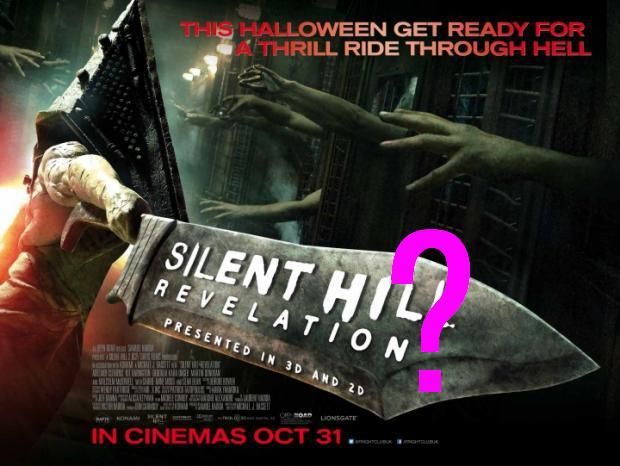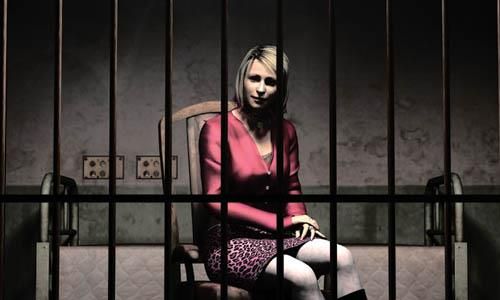This post has not been edited by the GamesBeat staff. Opinions by GamesBeat community writers do not necessarily reflect those of the staff.

Silent Hill: Revelation appears to have little understanding of what made its source material compelling enough to warrant a cinematic adaptation in the first place.
While the first film was far from perfect, it at least captured the forlorn isolation that pervades the best entries in the series. These games tormented players with haunting sights and, more effectively, sounds, to create locations steeped in atmosphere that were deeply unsettling. For a time.
The first two games are widely recognized as landmark titles — both within the horror genre and video games as a medium. They both feature broken, guilt-ridden protagonists descending through a hell of their own design, populated by antagonistic manifestations of their deepest fears.
Failings and inadequacies are turned back on these characters as they are forced to physically assault their own inner turmoil. The forlorn nature of the lonely, often completely empty town collides with hints of visceral terror, and then all falls quiet again. This silence, though, was often more unsettling than the violence that punctuated it.
The first film captured this atmosphere admirably. The streets of Silent Hill still seemed confusing and dangerous even though we were now viewers and not participants. The slowly building tension was present; anything could be hiding in the fog, though this time I couldn’t simply run away from what I found. After the sharp shocks, we were always returned to the streets, to the heart of Silent Hill’s power over both player and viewer.
That film ultimately falls apart once it forgets this, as atmosphere is thrown out in favor of confrontations with sexy nurses and Pyramid Head. Both are signifiers from the games but, crucially, each is devoid of context here. It was the intrinsic link between a character and their tormentors that made the first two games so frightening. The thought that Silent Hill could delve deep within an individual, find their dirtiest fantasies and most shameful secrets, and then make the character confront them is horrific.
Murderous, disfigured medical practitioners are scary, but knowing that they exist as an explicit result of the player character’s sexual preoccupations is infinitely more disturbing. That the character is forced to dispatch their own fears makes the first games, especially Silent Hill 2, uniquely intimate horror experiences.

Silent Hill 3 is where things began to slip. The original game featured enemies created from the subconscious of both the protagonist and antagonist, and since SH3 was a direct sequel, it was duty bound to do the same. This diluted the personal torment that was so effective in SH2 and pared back the emotional resonance seen in that game. What remains are manifestations that are less focused and ultimately less rewarding to interact with, appearing more carnival sideshow than charnel house torment.
Aspects of the previous games collide with one another at this point and galvanize the direction of the series thereafter. Silent Hill 3 ushers in the end of disparate tales being told to the backdrop of the town and instead the story of the town itself becomes the series’ prominent focus.
The games after Silent Hill 3 attempt to weave increasingly complex and contrived plots that somehow link the protagonist to the town, its past, and inhabitants. Silent Hill ceased to exist as a purgatory for lost souls to confront themselves in. Later games busy themselves with filling in parts of the town’s history and the events in and around the first and third entries which have, over time, become the main focus of the series’ mythology. Cults, evil deities, Immaculate Conception, and sacrifices take over where the series, after SH2, should have continued its exploration of self-destruction, depression, and psychosis.

In following the plot of the third game, Silent Hill: Revelation is doomed to wallow in the needless torrents of ancillary information necessary for it to be coherent. While the first game — and by extension, film — were steeped in the aforementioned mystic trappings, they were kept at a more manageable level. By deciding to continue with this previously resolved conflict, the sequels become intrinsically linked to hokey conspiracies and outplayed cultish nonsense.
The mystery that once made Silent Hill such a compelling and frightening place was stripped away by increasingly heavy handed applications of history and exposition. Both game and film feature long, utterly needless, monologues explaining exactly why Silent Hill has become such a cursed place. Built on an ancient Indian burial ground? Really?
The film commits another disservice to the series by homogenizing its antagonists even more than its forebear. While this had begun to some extent in the games by Silent Hill 3, Revelation throws away any sense of propriety when it comes to monsters. Nurses and Pyramid Head, as I said earlier, have become the defacto figureheads for the entire series and appear to be obligatory inclusions at this point.
The rest of the cast of creatures, however, appear to have been designed with only the loosest of connection to either the lead characters or the traditions of the series. A single Lying Creature, a spider mannequin, a naked Nemesis lookalike, and a Carrie Anne Moss Cenobite. The designs are incongruous and belittle the notion of one’s fears made flesh. They show that Revelation, more so than even the original film, is simply an excuse to throw together mildly shocking scenes of violence with opportunistic jump scares and call it a day.
The first two Silent Hill games displayed commendable levels of reverence to the worlds and differing mythologies they existed in and around. After that, the series lost its way as it expanded needlessly upon these very foundations and attempted to rationalize the mystery through hackneyed plot contrivances. SH2 is so effective at unsettling the player precisely because they have very little grasp of what is and is not real around them.
Revelation’s biggest failure is that it continues to commit the sins of the father. Disparate aspects of almost every game in the series thus far are thrown together with little care for the source material. The film is cinematic reconstituted meat … different parts of the series melted down and squeezed together to create something that resembles the original but could never be mistaken for it. The biggest shame here is that the same, too, can be said of almost every entry in the series over the past decade*.
Oh, and there aren’t any revelations in Silent Hill: Revelation. Not one.
*Shattered Memories was a bold and fantastically realized psychological thriller, and I really like it.
